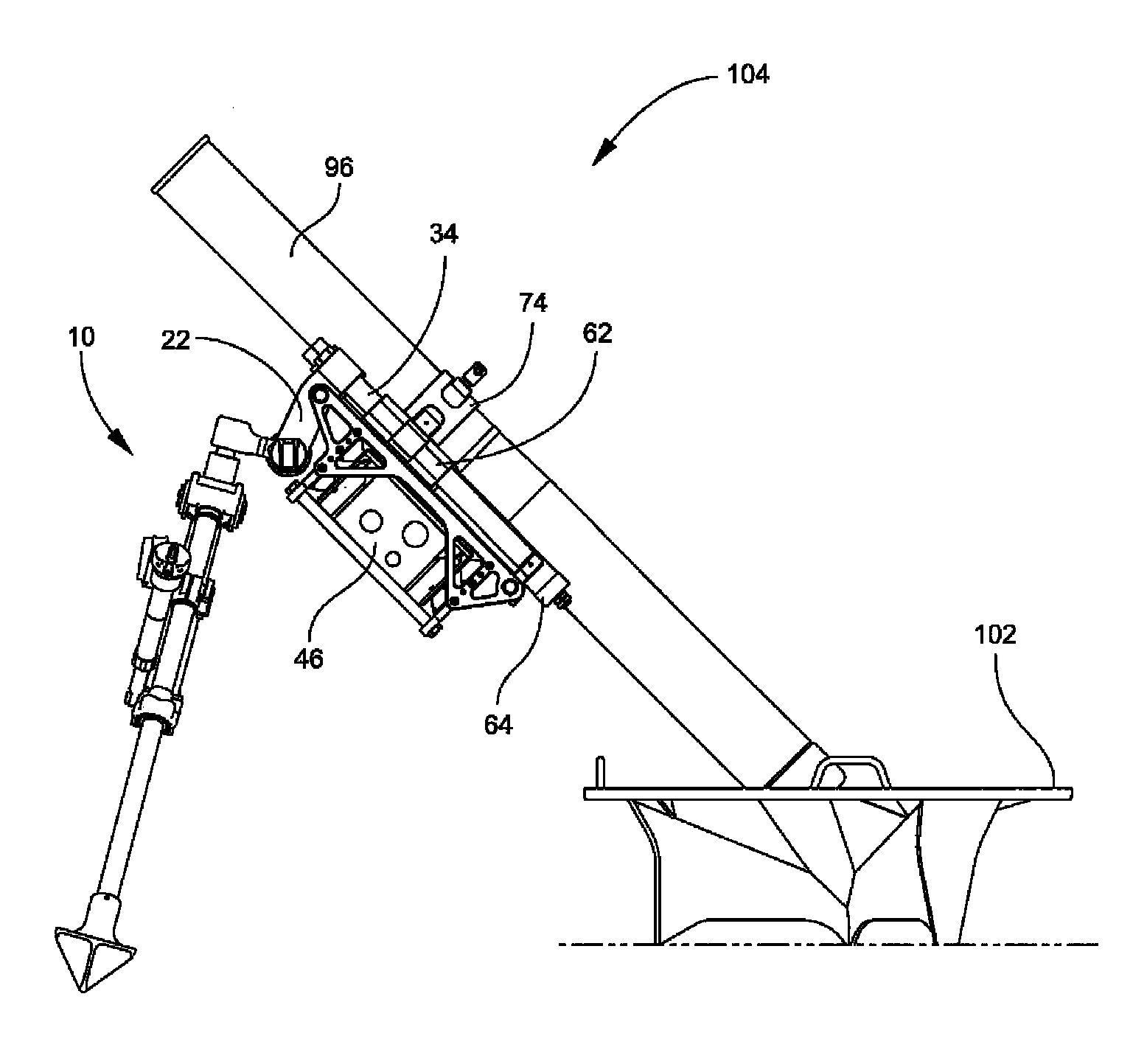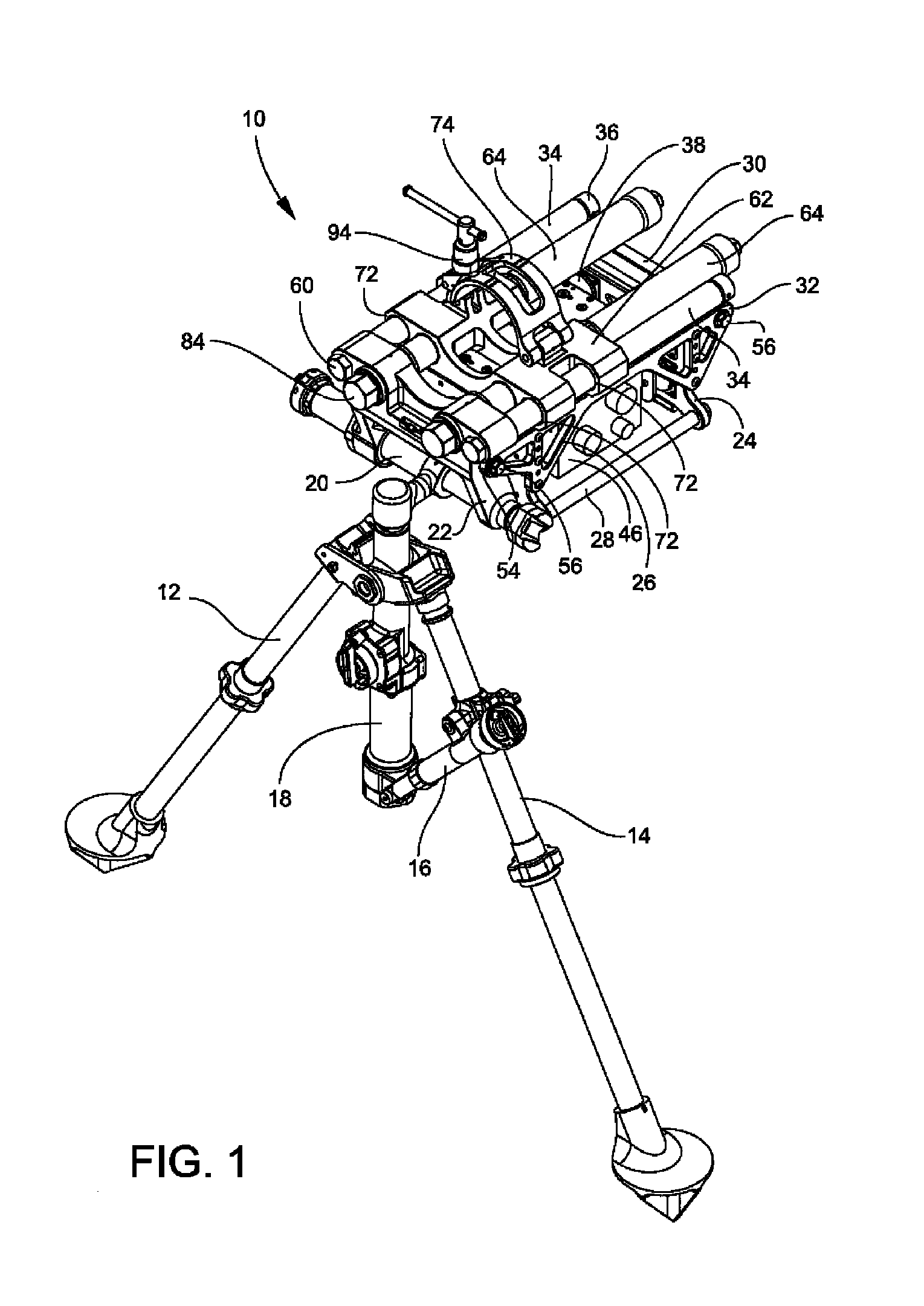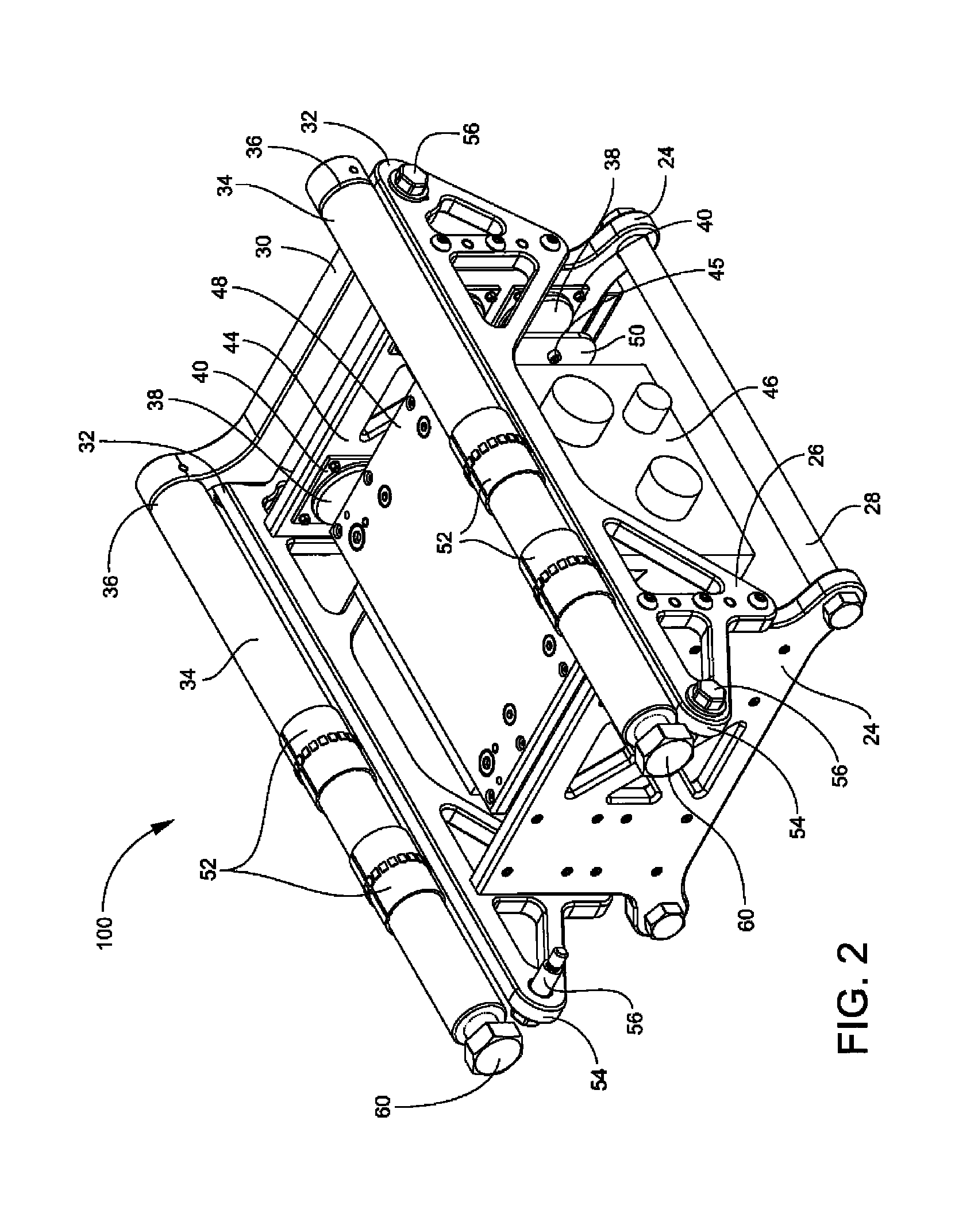Bipod-mounted mortar fire control system
a control system and mortar technology, applied in the field of mortar systems, can solve the problems of no single mounting method that may be used, and unable to meet the requirements of the application
- Summary
- Abstract
- Description
- Claims
- Application Information
AI Technical Summary
Benefits of technology
Problems solved by technology
Method used
Image
Examples
Embodiment Construction
[0027]A mortar bipod may include an apparatus for mounting mortar fire control hardware or other electronics which are required to be co-oriented with the mortar cannon tube. The bipod may be axially buffered from the cannon tube and its associated recoil shock. Compared to mounting the electronics to a buffered assembly that is attached directly to the cannon tube, mounting the electronics to a buffered bipod may eliminate the need to remove the electronics from the cannon tube when the cannon tube is removed, such as in misfire procedures. In prior art mortar systems, the fire control hardware, such as a pointing device or DFCS, may be mounted to the cannon tube.
[0028]The novel mortar bipod may better isolate the DFCS from the harsh firing environment and may minimize the shock loads experienced by the DFCS. The novel mortar bipod may also weigh much less than prior art bipods. For example, an embodiment of the novel mortar bipod for use with a 120 mm mortar system may weigh about...
PUM
 Login to View More
Login to View More Abstract
Description
Claims
Application Information
 Login to View More
Login to View More - R&D
- Intellectual Property
- Life Sciences
- Materials
- Tech Scout
- Unparalleled Data Quality
- Higher Quality Content
- 60% Fewer Hallucinations
Browse by: Latest US Patents, China's latest patents, Technical Efficacy Thesaurus, Application Domain, Technology Topic, Popular Technical Reports.
© 2025 PatSnap. All rights reserved.Legal|Privacy policy|Modern Slavery Act Transparency Statement|Sitemap|About US| Contact US: help@patsnap.com



